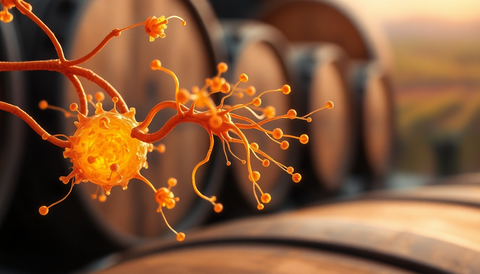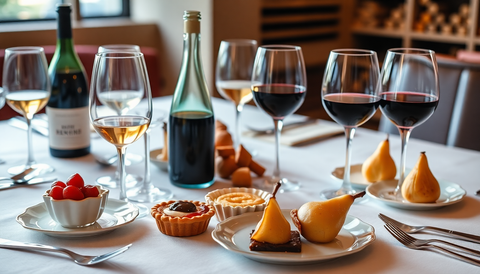As the wine industry continues to evolve, the age-old debate between screw caps and cork closures has become a topic of intense discussion among wine enthusiasts and professionals alike. In this comprehensive blog post, we'll delve into the intricacies of these two closure methods, exploring their respective advantages, disadvantages, and the impact they have on the overall wine-drinking experience.
The Rise of Screw Caps
Screw caps, also known as "twist-offs," have been gaining significant traction in the wine industry over the past few decades. Originating in the 1960s, these modern closures were initially met with skepticism and resistance from traditionalists who viewed them as a threat to the romantic and prestigious image of cork-sealed wines.
However, as the technology behind screw caps has advanced, their popularity has steadily risen. Winemakers have recognized the numerous benefits that screw caps offer, including:
Consistent Oxygen Ingress
One of the primary advantages of screw caps is their ability to provide a consistent and controlled level of oxygen ingress into the wine. This is crucial for the wine's maturation and development, as the right amount of oxygen exposure can enhance the wine's flavor profile and longevity.
Reduced Risk of Cork Taint
Cork taint, a common issue caused by the presence of 2,4,6-trichloroanisole (TCA), can result in a musty, off-putting aroma and flavor in the wine. Screw caps effectively eliminate the risk of cork taint, ensuring that the wine's true character is preserved.
Improved Shelf Life
Screw caps are renowned for their ability to maintain the wine's freshness and integrity for a more extended period. This is particularly beneficial for wines that are intended to be consumed within a few years of their release, as the screw cap's airtight seal helps to preserve the wine's vibrant fruit flavors and aromas.
Convenience and Ease of Use
Screw caps offer a level of convenience that cork-sealed bottles cannot match. They are easy to open and reclose, making them a popular choice for casual wine drinkers and those who appreciate the simplicity of a twist-off closure.
The Enduring Allure of Cork
Despite the rise of screw caps, cork closures continue to hold a special place in the hearts of many wine enthusiasts and producers. The traditional cork closure has been the standard for centuries, and it carries with it a sense of heritage, tradition, and prestige that is deeply ingrained in the wine culture.
Perceived Authenticity
For many wine drinkers, the act of uncorking a bottle of wine is a ritual that adds to the overall wine-drinking experience. The sound of the cork being pulled, the aroma that wafts out, and the visual of the cork itself all contribute to the perception of authenticity and quality.
Oxygen Management
While screw caps provide a consistent level of oxygen ingress, cork closures offer a more dynamic and nuanced approach to oxygen management. The natural variability of cork allows for a gradual and controlled exposure of the wine to oxygen, which can be beneficial for the wine's development and aging potential.
Sustainability and Environmental Considerations
Cork is a renewable and sustainable resource, as cork oak trees can be harvested without being destroyed. This makes cork a more environmentally friendly option compared to some synthetic closures. Additionally, the cork industry plays a vital role in the preservation of cork oak forests, which are important habitats for various species.
The Evolving Landscape
As the debate between screw caps and cork closures continues, it's clear that both closure methods have their merits and drawbacks. Ultimately, the choice between the two often comes down to personal preference, the wine's intended style, and the winemaker's vision for the final product.
Many winemakers have adopted a hybrid approach, using screw caps for their younger, more fruit-forward wines, while reserving cork closures for their premium, age-worthy offerings. This flexibility allows them to cater to the diverse preferences of their customers while ensuring that the wine's character is optimally preserved.
Moreover, the wine industry has seen the emergence of innovative closure solutions, such as synthetic corks and glass stoppers, which aim to combine the best attributes of both screw caps and traditional cork. These alternative closures are gaining traction as winemakers and consumers seek to find the perfect balance between functionality, sustainability, and the wine-drinking experience.
In conclusion, the debate between screw caps and cork closures is a complex and multifaceted one, with valid arguments on both sides. As the industry continues to evolve, it's likely that we'll see a continued coexistence of these closure methods, each serving a specific purpose and catering to the diverse preferences of wine enthusiasts around the world.
The Importance of Closure Choice
The choice of closure for a wine is a critical decision that can have a significant impact on the wine's quality, longevity, and overall drinking experience. Winemakers must carefully consider the unique characteristics of their wines and the expectations of their target consumers when selecting the appropriate closure.
Matching Closure to Wine Style
For light, fresh, and fruit-forward wines, screw caps can be an excellent choice, as they help to preserve the wine's vibrant aromas and flavors. These wines are often intended for early consumption, and the consistent oxygen ingress provided by screw caps can ensure that the wine's youthful character is maintained.
On the other hand, for premium, age-worthy wines, cork closures may be the preferred option. The dynamic oxygen management capabilities of cork can facilitate the wine's gradual maturation and development, allowing complex flavors and aromas to emerge over time.
Consumer Preferences and Perceptions
While the technical merits of each closure method are important, the perceptions and preferences of wine consumers also play a significant role in the closure decision. Some consumers may still associate cork closures with a sense of tradition and prestige, while others may appreciate the convenience and reliability of screw caps.
Winemakers must carefully navigate these consumer preferences, balancing the practical benefits of each closure type with the emotional and cultural associations that their customers may have.
Sustainability and Environmental Impact
As environmental consciousness continues to grow, the sustainability and environmental impact of wine closures have become increasingly important considerations. Cork, as a renewable and biodegradable resource, is often viewed as the more eco-friendly option compared to synthetic or metal closures.
However, the wine industry is also exploring innovative solutions, such as recycled and recyclable screw caps, to address the environmental concerns associated with certain closure types. Ultimately, the choice of closure should consider not only the wine's characteristics but also the broader environmental impact and the industry's commitment to sustainability.
Conclusion
The debate between screw caps and cork closures in the wine industry is a complex and multifaceted one, with valid arguments on both sides. As the industry continues to evolve, it's clear that there is no one-size-fits-all solution, and winemakers must carefully consider the unique characteristics of their wines, the preferences of their consumers, and the broader environmental impact when selecting the appropriate closure.
Whether you prefer the traditional allure of cork or the convenience and reliability of screw caps, the choice of closure is an important factor in shaping the overall wine-drinking experience. As we continue to explore and embrace new closure solutions, the wine industry's commitment to quality, sustainability, and the preservation of the wine's true character will remain at the forefront of this ongoing discussion.




Comments (0)
There are no comments for this article. Be the first one to leave a message!